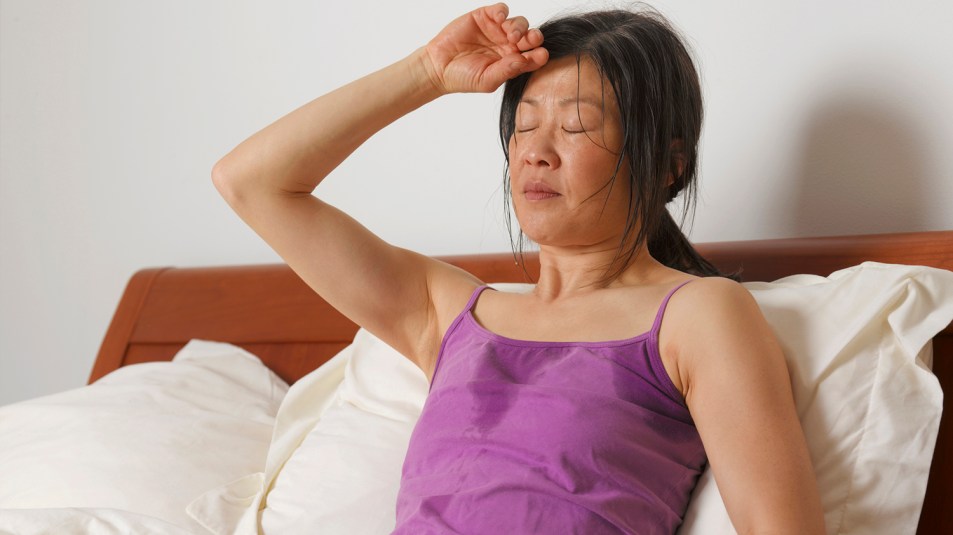Are You Suffering From Night Sweats? This Lifestyle Habit Could Be Making Them Worse
Sit less, sweat less?

Moving your body on a regular basis is beneficial for your health for plenty of great reasons — better heart health, improved mood, and a longer life chief among them. Are you sitting down? Well, here’s another one to add to the list: If you’re approaching, or already in, menopause, it seems that if you never work up a sweat during the day, you might find yourself breaking into one when you’re trying to sleep at night.
A new study found an increase in both the frequency and severity of night sweats — the bane of menopause — in women with sedentary lifestyles. In other words? Sit in the daytime, sweat at night.
The link between exercise and hot flashes, which cause night sweats when they happen while you’re sleeping, isn’t new. Past studies have shown that women who regularly engage in moderate to vigorous cardiovascular exercise (that is, anything that gets your heart rate up) have fewer, and milder, hot flashes. Scientists think that’s because exercise improves cardiovascular health, which in turn improves your body’s ability to thermoregulate, or control its core temperature.
This new study, however, which was presented this week at the annual meeting of The North American Menopause Society (NAMS) in Washington, DC, may be the first to specifically and objectively study the link between sedentary behavior and hot flashes without relying on self-reported data from research subjects.
Study Methodology
For the study, researchers recruited 66 women ages 45-55 who were not taking hormone therapy or other medications that might impact hot flash frequency or severity. The women all reported having irregular menstrual cycles, or had their last period within the past two years. For 24 hours, they kept track of hot flashes by pressing a button or writing in a journal. They also wore monitors that recorded both heart rate and temperature, for an objective measure of physical activity and hot flashes. Preliminary results found that sedentary behavior was, indeed, predictive of hot flashes.
Dr. Sarah Witkowski, co-author of the study and an exercise physiologist at Smith College, said knowing how sedentary behavior affects night sweats can help doctors give better evidence-based recommendations to the estimated 75 percent of women who suffer from hot flashes. “Since women near the menopause transition spend a large portion of their daily activities in sedentary behaviors, it’s important to understand how such behavior influences menopausal hot flashes,” she told NAMS.
It’s worth noting that this study didn’t find that exercising more, or harder, had any effect on night sweats. It simply linked a sedentary lifestyle with an increase in nighttime hot flashes. So don’t feel like you need to push yourself in order to potentially benefit from this research. In fact, research shows that even 30 minutes a day of moderate physical activity — for example, a brisk walk — can offset the effects of a sedentary lifestyle.
How To Ease Night Sweats
While I take umbrage at Dr. Witkowski’s assertion that women in their 40s and 50s are largely sedentary — I’d like to introduce her to all the older ladies who regularly attend Zumba classes with me in the park — it’s true that many of us spend a good portion of our days sitting in office chairs, looking at screens. And as someone who has been dealing with night sweats since my late 30s (I’m precocious, what can I say?), I’m open to anything that might help ease my misery. (Hello, menopause pajamas.)
Besides getting up and moving as much as possible during the day, other things that have been found to help stop night sweats include avoiding caffeine, spicy foods, and alcohol, as well as practicing mindfulness and meditation. Using a cooling mattress topper and cooling bedding can also help keep you comfortable while you sleep.
Getting older, as the saying goes, isn’t for sissies. But as my mother always reminds me, it sure beats the alternative! Now, shall we all step away from our screens and go for a walk?












